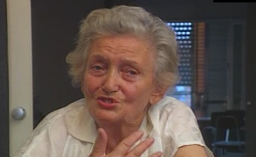You searched for: 摩洛哥盗U交易平台源码平台【TG���������@EK7676】平台包网搭建摩洛哥盗U交易平台源码平台【TG���������@EK7676】平台包网搭建weBOP7Hdiu
<< Previous | Displaying results 1-17 of 17 for "摩洛哥盗U交易平台源码平台【TG���������@EK7676】平台包网搭建摩洛哥盗U交易平台源码平台【TG���������@EK7676】平台包网搭建weBOP7Hdiu" | Next >>
-
The “Gypsy camp” in Hodonín u Kunštátu
PhotoThe “Gypsy camp” in Hodonín u Kunštátu (Hodonin bei Kunstadt), Protectorate of Bohemia and Moravia (Czech Republic), 1942.
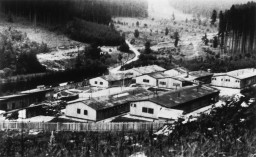
-
Diagram of the “Gypsy camp” in Hodonín u Kunštátu
DocumentDiagram of the Hodonín u Kunštátu (Hodonin bei Kunstadt) camp in the Protectorate of Bohemia and Moravia (Czech Republic). Before it was converted into a Zigeunerlager (“Gypsy camp”) in 1942, it served as a penal labor camp. Translation of key: Scale 1:500 Sleeping quarters Sleeping quarters Mess-hall Infirmary Offices, prison Living quarters for guard staff Economic/Agricultural Building Latrine Well Mess-hall for guard staff Pens for guard dogs
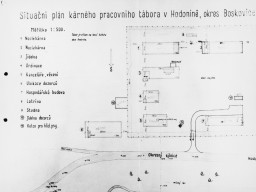
-
Hodonín U Kunštátu (Hodonín bei Kunstadt) (Roma camp)
ArticleIn March 1942, the Hodonin camp was classified as a camp for Roma. It was a transfer station during deportation to Auschwitz-Birkenau. Learn about the camp and its history.

-
Bremen-Farge
ArticleLearn more about Bremen-Farge, a subcamp of Neuengamme where the majority of prisoners were used to construct an underground U-boat shipyard for the German navy.
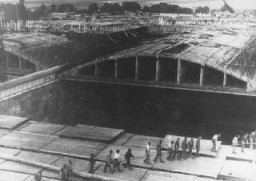
-
Martin Niemöller as a German naval officer
PhotoGerman naval officer Martin Niemöller (top, foreground) commands a U-Boat during World War I. Flensburg, Germany , ca. 1914–17.
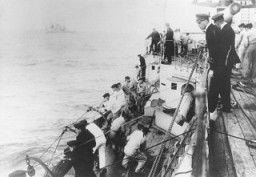
-
Karl Dönitz
ArticleBrief overview of the charges against Karl Dönitz, German navy commander in chief, during the International Military Tribunal at Nuremberg.
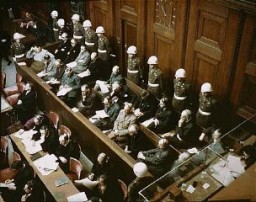
-
Drancy
ArticleThe Germans established an internment camp at Drancy in August 1941. The following summer, Drancy became the main transit camp for deportations of Jews from France.
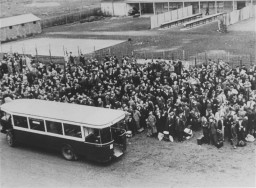
-
Martin Niemöller: Biography
ArticleProtestant pastor Martin Niemöller emerged as an opponent of Adolf Hitler and was imprisoned in camps for 7 years. Learn about the complexities surrounding his beliefs.
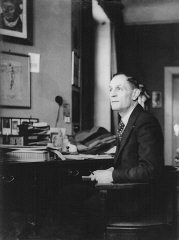
-
Martin Niemöller: "First they came for..."
ArticleLearn about the origins and legacy of Pastor Martin Niemöller's famous postwar words, “First they came for the socialists, and I did not speak out…”
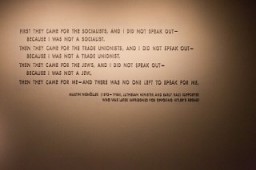
-
Dismissal letter from the Berlin transit authority
DocumentA letter written by the Berlin transit authority (Berliner Verkehrs Aktiengesellschaft) to Viktor Stern, informing him of his dismissal from his post with their agency as of September 20, 1933. This action was taken to comply with provisions of the Law for the Restoration of the Professional Civil Service. On April 7, the German government issued the Law for the Restoration of the Professional Civil Service (Gesetz zur Wiederherstellung des Berufsbeamtentums), which excluded Jews and political opponents…

-
Murray Pantirer describes the antisemitic climate in postwar Krakow
Oral HistoryThe Germans occupied Krakow in 1939. Murray's family was confined to the Krakow ghetto along with the rest of the Jewish population of the city. In 1942, Murray and a brother were deported for forced labor in the nearby Plaszow camp. In May 1944, his brother was transferred to Auschwitz and Murray was sent to the Gross-Rosen camp in Germany. Murray was later transferred to Bruennlitz, in the Sudetenland, as a forced laborer for German industrialist Oskar Schindler. Schindler helped the Jews who worked for…
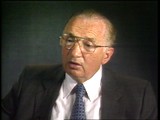
-
German Jews during the Holocaust
ArticleBy September 1939, over half of German Jews had emigrated. WWII would accelerate the persecution, deportation, and later, mass murder, of the remainder of Germany's Jews.

-
Irena Sendler describes how she was arrested and tortured by the Gestapo
Oral HistoryIrena Sendler (1910–2008) was a member of the Council for Aid to Jews, codenamed “Żegota.” Żegota was a clandestine rescue organization of Poles and Jews in German-occupied Poland. Supported by the Polish government-in-exile, Żegota coordinated efforts to save Jews from Nazi persecution and murder. It operated from 1942 to 1945. Irena Sendler (Sendlerowa) was working as a social worker in Warsaw when World War II broke out in 1939. After the Nazis forced Warsaw’s Jews to move into the ghetto…
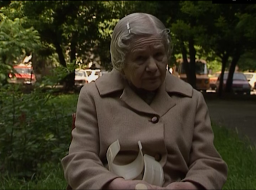
-
Neuengamme
ArticleIn 1938, the Nazis established Neuengamme concentration camp. Learn more about camp conditions, medical experiments, and liberation.
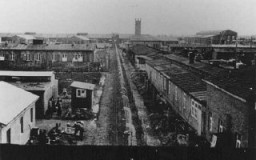
-
International Military Tribunal: The Defendants
ArticleListing of the 24 leading Nazi officials indicted at the International Military Tribunal at Nuremberg. Learn about the defendants and the charges against them.

-
Moringen Youth Camp
ArticleThe Moringen camp was one of the so-called youth protection camps that the Nazi regime established for young people who were alleged to have strayed from Nazi norms and ideals.
-
Miriam Peleg explains why Żegota was important
Oral HistoryMiriam Peleg (1913–1996) was a member of the Council for Aid to Jews, codenamed “Żegota.” Żegota was a clandestine rescue organization of Poles and Jews in German-occupied Poland. Supported by the Polish government-in-exile, Żegota coordinated efforts to save Jews from Nazi persecution and murder. It operated from 1942 to 1945. Born Maria Hochberg, Miriam was from a Polish-Jewish family. She grew up in a small town about 70 miles east of Kraków. As early as the summer of 1940, Miriam obtained…
